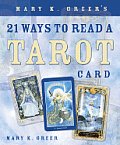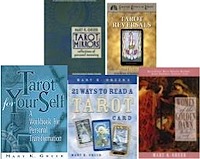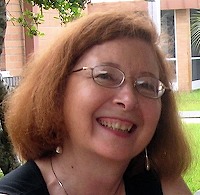By Melanie Harris As one of the most celebrated and prolific authors in the Tarot community, Mary K. Greer knows what she’s talking about when it comes to those tricky 78 cards. She’s worked with the Tarot for forty years, and she’s published eight books on the subject, the most recent of which, Mary K. Greer’s 21 Ways to Read a Tarot Card (Llewellyn 2006), won the 2006 COVR award for best divination book. She’s also been honored with the Mary Redman Foundation’s 2006 Mercury Award for excellence in communication in the metaphysical field, and she was recognized in 2007 with the International Tarot Lifetime Achievement Award. I wanted to talk to this interesting and knowledgeable lady in hopes of unraveling some of Tarot’s biggest mysteries and points of contention, and to my delight, Mary graciously agreed to answer my toughest Tarot questions. Melanie Harris: Do you agree with Waite that the Tarot holds a "Secret Doctrine"? Mary K. Greer: Yes. These inner truths are depicted through Tarot’s images and could be said to express a powerful set of archetypal themes from the collective unconscious of humanity. Modern decks reflect deliberate attempts by individuals, since at least the 18th century, to portray a range of spiritual beliefs, transcending any one creed, of what has come to be known as the ‘Ageless Wisdom Tradition.’ This tradition descends from mystery schools that go back to ancient times, though not necessarily in a straight, unbroken line. Waite explains, when discussing the Hermit card, that it is not necessary to deliberately conceal these Mysteries, which is why he made sure the Hermit’s cloak on the RWS card did not conceal the lamp. “The Divine Mysteries,” he says, “secure their own protection.” You have to learn to read the signs and symbols but, ultimately, give yourself over to something that can only be experienced, not taught. Near the end of his life Waite wrote: “As one who ascends the Tree of Life, I have passed upwards clothed in Symbols and have dwelt amidst a ministry of images. . . . But everything depends on the individual mind’s capacity to make unto itself a living meaning behind the Symbols and the Sacraments.” This is the true meaning of the Secret Doctrine.
part 2

"Let's just say I followed Timothy Leary's axiom, 'Tune in, Turn on, Drop out,' before I had even heard of it."
MH: Let’s talk about the age of the Tarot, and its origins. Is it possible that the Tarot was just a new form of Mystery play, or a new application of an older practice of using images to teach spiritual principles to the illiterate? It strikes me as curious that the Tarot emerged in Northern Italy around the same time that Venice placed a ban on the importation of playing cards. So, could it be that this wasn't the invention of the Tarot, but simply the Italian version of an older, multi-cultural card divination system?
MKG: The history of Tarot is a huge subject with all kinds of subtle bits of evidence. As you suggest, playing cards existed for at least fifty years before the Tarot was invented. Venice may have banned the importation of playing cards, but it was in Milan (or maybe Ferrara) that Triumphs, as they were first called, were developed. A variety of laws sometimes banned and sometimes allowed playing with cards. There were also various experiments before the Tarot, as we know it, emerged as the dominant form.
Nothing points to card divination in the 15th century or earlier and no one has ever found any direct indication of a proto-Tarot (ancestor to the Trumps). For all practical purposes, playing cards were not used for divination until the 17th century and Tarot cards not until the 18th century. There are a few suggestive exceptions involving sortes or divination by lots. These seem to be specialized cases and did not lead to card reading as we know it today. It's intriguing that two rolls of the dice yield 21 possibilities and three rolls of the dice yield 56 (for a total of 77 - and the Fool doesn't count), but there's no indication that the Tarot developed from dice divination.
Paul Huson, in The Mystical Tarot, talks about a possible connection between Tarot and Mystery Plays. There are similar motifs, but not a complete parallel sequence. The Tarot images followed pictorial themes common in medieval and Renaissance Christian Europe, with at least half the cards bearing a striking resemblance to illustrations of the Book of Revelations. The original deck might have been a kind of philosophic device describing a cosmological view of humanity's place in the universe. A few clerics like Bernard of Siena preferred to view the Tarot as a dangerous and devilish distraction from a life of purity and prayer - but then practically everything not specifically religious was to them.
There's no indication Tarot was an attempt to teach illiterates. The earliest decks and fragments are elaborate gold and silver-embossed paintings from the courts of Northern Italy. The well-educated members of these courts would have easily understood their allegorical allusions.
All early references are to Tarot being used for games. During the 16th century, Tarot (or Tarocchi as it was then called) was used for a poetic game called "tarocchi appropriati" in which the Trumps were distributed among the women of the court, and short poetic lines were written comparing the lady with characteristics of the card. For instance, the Sun: "She blinds with her light," and Strength: "Like a hard rock between the blowing winds." I consider this similar to the character analysis that can take place in today's readings.


